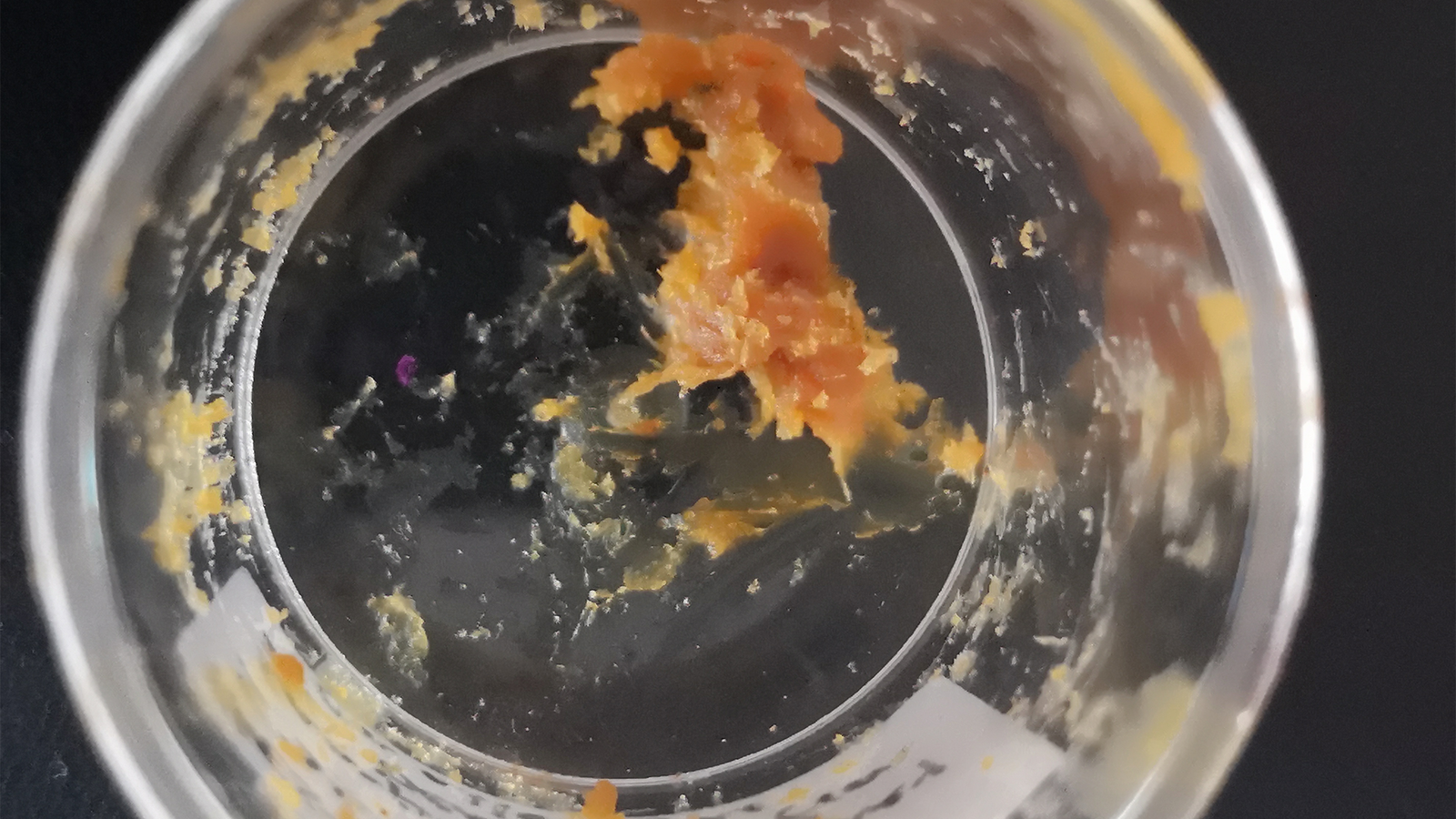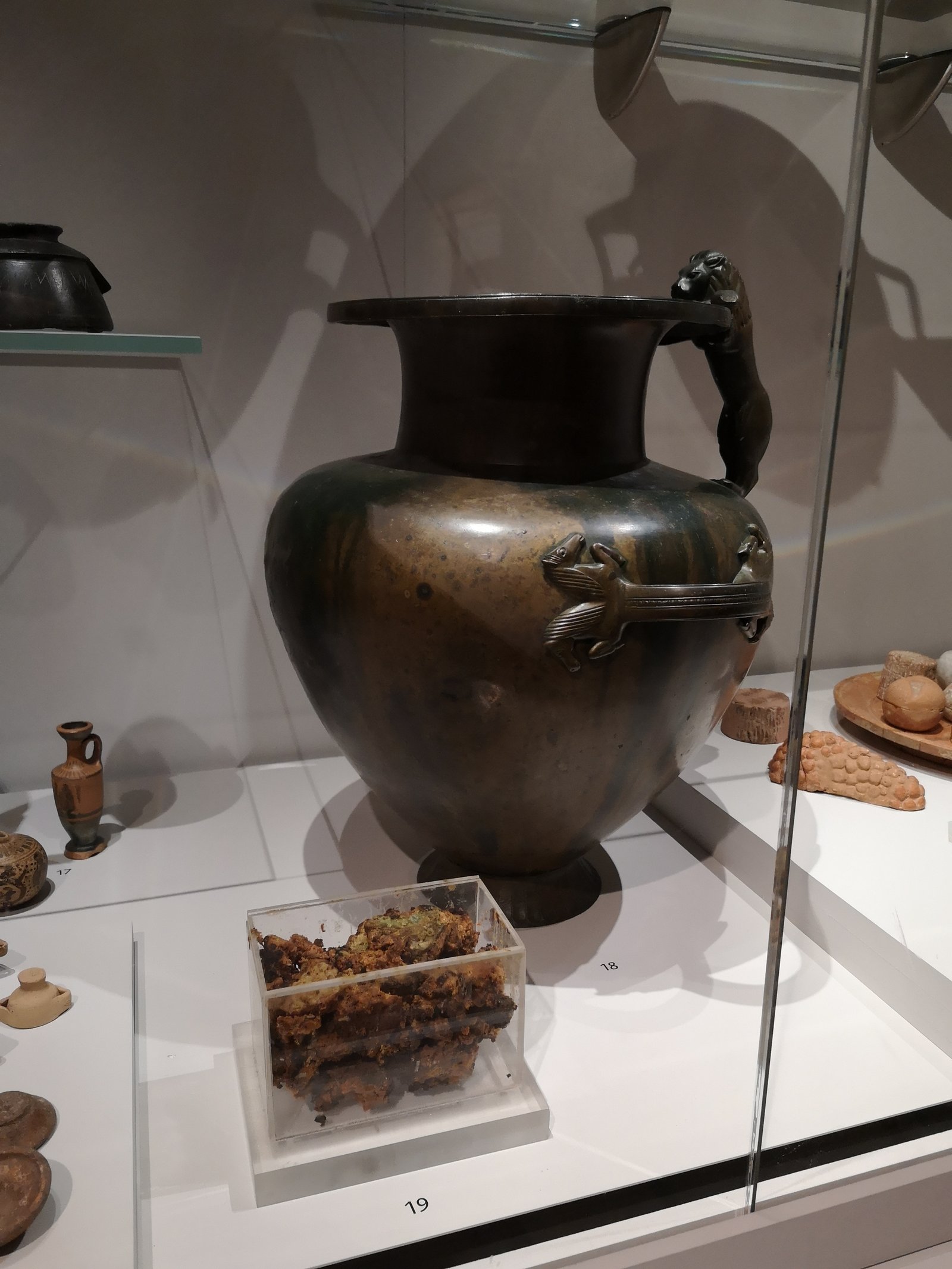
Get the Popular Science daily newsletter💡
Breakthroughs, discoveries, and DIY tips sent every weekday.
The buzz surrounding the contents of a 2,500-year-old bronze and copper jar has perplexed archaeologists for half a century. What was this residue with ties to Ancient Greece? Is it the remains of fats or oils from some kind of meat, or perhaps beeswax used for face creams, sealing boats, and more?
A new reanalysis of this millennia-old residue found that it is likely the remains of ancient honey. The findings are detailed in a study published July 30 in the Journal of the American Chemical Society.
In the ancient world, honey was an important substance. It was found in alcoholic beverages uncovered in the tomb of King Midas and people in ancient Mesopotamia and Egypt used the sticky substance as a common medicinal ingredient. It was used to treat burns and fight infections. It was also used as a universal sweetener in foods and drinks.
Honey also had a role in death rituals. According to historical accounts, Alexander the Great was preserved in honey upon his death. The substance was sometimes left in shrines as offerings to the gods and buried alongside the dead–whether they were conquerors or commoners. In 1954, an underground Greek shrine dating to about 520 BCE was discovered in Paestum, Italy, about 90 minutes from Pompeii. Archeologists at the time initially assumed that it was honey, but three different analyses over the next 30 years failed to confirm the presence of honey in the residue. Instead, it was believed to be some animal or vegetable fat that had been contaminated with pollen and insect parts over time.

The copper pot eventually made its way to University of Oxford’s Ashmolean Museum for an exhibition, so a team there had a chance to re-examine the mystery substance. The researchers led by Oxford archeologist Luciana da Costa Carvalho and biological chemist James McCullagh, analyzed samples of the residue to determine its molecular makeup.
This closer look revealed that the residue has a chemical fingerprint nearly identical to that of modern beeswax and honey. It has a higher acidity level consistent with the changes that occur during long-term storage. It also has a chemical composition more complex than heat-degraded beeswax. This suggested that honey or some other substance was once present in the vessel.
[ Related: Ancient funerals may have included a ritual feast on a giant bird. ]
Additionally, where the residue had touched the jar, degraded sugar mixed with copper was not found. Instead, hexose sugars–a common group of sugars that is found in honey–were detected in greater concentrations in the ancient residue than modern beeswax. Royal jelly proteins that are known to be secreted by the western honeybee, were also found in the residue.
Together, the team says that these results suggest that the mystery substance is what remains of ancient honey. However, it is entirely possible that other bee products such as propolis may also be present in this sample.
“Ancient residues aren’t just traces of what people ate or offered to the gods—they are complex chemical ecosystems,” da Costa Carvalho said in a statement. “Studying them reveals how those substances changed over time, opening the door to future work on ancient microbial activity and its possible applications.”

More deals, reviews, and buying guides
The PopSci team has tested hundreds of products and spent thousands of hours trying to find the best gear and gadgets you can buy.


